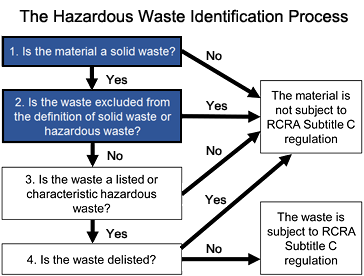Little Known Facts About Reclaim Waste.
Little Known Facts About Reclaim Waste.
Blog Article
The Main Principles Of Reclaim Waste
Table of ContentsA Biased View of Reclaim WasteIndicators on Reclaim Waste You Need To KnowReclaim Waste Things To Know Before You BuyAn Unbiased View of Reclaim WasteNot known Facts About Reclaim Waste
Residential sewer waste refers to the waste and products from a residential septic container. The appropriate management and disposal of residential sewage waste call for liquid waste to be transferred to a sewage therapy plant where the correct approaches and tools are used to cleanse and dispose of waste.
Commercial waste commonly includes potential risks, such as combustible products or a mixture of liquid and solid waste items, and calls for a more sophisticated and thorough disposal procedure. The disposal of commercial waste normally entails the filtration of waste before transport to ensure safe and appropriate disposal. Hazardous waste is created from by-products and overflow of commercial procedures and production.
This kind of waste can not use the exact same sewer management transportation or processes as septic or industrial fluids. The commercial waste management process requires the assessment and screening of liquid waste before it goes through the disposal process (industrial wastewater treatment). Drainage waste is the fluid waste that originates from overflow and excess stormwater in extremely inhabited areas or cities
Runoff waste can cause contamination and flooding if not handled properly. Making sure correct waste management can prevent disasters and minimize environmental harm.
Unknown Facts About Reclaim Waste
Call PROS Solutions today to learn more about our waste management and disposal services and the appropriate methods to care for the liquid waste you generate.
(http://peterjackson.mee.nu/where_i_work#c2441)This supposed 'wastewater' is not just a crucial resource however, after treatment, will be launched to our land, waterways or the ocean. Utilized water from commodes, showers, baths, cooking area sinks, washings and industrial procedures is understood as wastewater.

water used to cool machinery or clean plant and tools). Stormwater, a form of wastewater, is drainage that flows from agricultural and metropolitan areas such as roof coverings, parks, gardens, roads, paths and gutters right into stormwater drains, after rainfall. Stormwater moves neglected straight to local creeks or rivers, eventually getting to the sea.
The smart Trick of Reclaim Waste That Nobody is Talking About
In Queensland, the majority of wastewater is dealt with at sewer treatment plants. Wastewater is transported from domestic or industrial websites with a system of drains and pump terminals, recognized as sewerage reticulation, to a sewage treatment plant. Neighborhood federal governments build, preserve and run most sewage treatment plants. Operators are licensed under the Environmental Defense Act 1994 to release treated wastewater at an acceptable ecological requirement right into waterways.
The Division of Natural Resources advises city governments concerning managing, operating and keeping sewage systems and treatment plants. In unsewered locations, regional federal governments may call for owners to set up private or home sewage therapy systems to treat residential wastewater from commodes, cooking areas, bathrooms and laundries. The Division of Natural Resources authorises using house systems when they are verified to be reliable.
A lot of stormwater gets no treatment. In some new neighborhoods, therapy of some stormwater to eliminate trash, sand and gravel has actually started utilizing gross pollutant catches. Wastewater treatment happens in 4 phases: Eliminates strong issue. Bigger solids, such as plastics and various other things mistakenly discharged to sewers, are gotten rid of when wastewater is travelled through displays.
Wastewater then flows into big containers where solids work out and are gotten rid of as sludge. Grease and scum are skimmed from the surface. Utilizes small living microorganisms called micro-organisms to damage down and get rid of continuing to be liquified wastes and great particles. Micro-organisms and wastes are incorporated in the sludge. Eliminates nitrogen and phosphorus nutrients that might trigger algal flowers in our rivers and intimidate aquatic life.
The Ultimate Guide To Reclaim Waste
Nutrient removal is not offered explanation at all sewage treatment plants due to the fact that it requires pricey specialist equipment. It is coming to be much more common in Queensland. Clear fluid effluent produced after therapy may still have disease-causing micro-organisms. If this effluent is released right into rivers such as rivers or the sea, the micro-organisms will at some point die out.

This generally implies wastewater needs to be treated or pollutants removed prior to it can be discharged to rivers. Most wastewater moves right into the sewage system. Under the Act, city governments administer authorizations and licences for environmentally appropriate tasks (ERAs) involving wastewater releases that might have a local impact. The department carries out authorizations and licences to Ages including wastewater releases that could have a local or statewide impact.
The Greatest Guide To Reclaim Waste
Otherwise, examples are taken for lab evaluation. Often several tests are required to develop the degrees of each of the various toxins such as oils, heavy steels and chemicals in water. Surveillance gives accurate details concerning water top quality and can verify that licence problems are being fulfilled. The information acquired via monitoring provides the basis for making water high quality choices.
Report this page